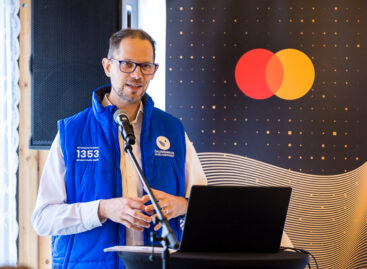Trust and use of cashless payments have also increased, according to Mastercard’s Digital Payments Index
According to Mastercard’s latest Digital Payment Index (DFI) study, which evaluates the development of payment digitization, Hungary improved its overall score by 11 points. This reflects the digital transformation taking place in the Hungarian economy and the development of the digital payment ecosystem. However, the DFI data also indicates that the growing diversity of services presents challenges for ecosystem players who must adapt to these changes.
The indicator increased by 11 points in four years
In 2023, the Mastercard Digital Payment Index stood at 62 points, which shows an increase of 11 points in the last four years. The Index traditionally examines three pillars: the development of the digital payment Infrastructure, Usage and Knowledge. In 2023, the Infrastructure and Usage pillars were the engine of growth, both increased by two points: Infrastructure from 76 to 78, Usage from 52 to 54.
At the same time, some stagnation can be detected in the Knowledge pillar: the indicator dropped from 55 to 54 points. According to analysts, the reason behind this phenomenon is the growing number of technologies enabling digital payments and the increasingly diverse range of available services, and it takes more time to acquire the related knowledge. That is why, although the Knowledge pillar is initially behind, the acquisition of new knowledge eventually results in expanding use. The increasing importance of cyber security draws attention to the importance of customer education.
Infrastructure
The results show that the growth of the first pillar of the Index was driven by innovative financial solutions such as QR code payments, payment requests and mobile terminals. However, the effect of the nationwide instant payment service that will be launched in September 2024 is not yet reflected in the 2023 data, further development of QR code payments is expected in the 2025 Index.
Despite the rapid spread of terminals, about half of businesses still do not have card payment options. There is still considerable potential in the expansion of the POS infrastructure, especially among micro-traders and sole proprietors. QR code payments and payment solutions with wearable devices have achieved significant growth in 2023.
Related news
Donate simply and securely: digital innovation in fundraising with Mastercard and Ecumenical Relief
🎧 Hallgasd a cikket: Lejátszás Szünet Folytatás Leállítás Nyelv: Auto…
Read more >We took you on a flight! (Part 2)
🎧 Hallgasd a cikket: Lejátszás Szünet Folytatás Leállítás Nyelv: Auto…
Read more >Holiday spending trends: affordable gifts, experiences and premium foods take center stage
🎧 Hallgasd a cikket: Lejátszás Szünet Folytatás Leállítás Nyelv: Auto…
Read more >Related news
CDs and DVDs are experiencing a renaissance at Vatera, but second-hand LEGO is the real star of this Christmas
🎧 Hallgasd a cikket: Lejátszás Szünet Folytatás Leállítás Nyelv: Auto…
Read more >Christmas tree shopping is also going digital: demand for online ordering is growing rapidly
🎧 Hallgasd a cikket: Lejátszás Szünet Folytatás Leállítás Nyelv: Auto…
Read more >NGM and VOSZ cooperation agreement for the security of digital commerce
🎧 Hallgasd a cikket: Lejátszás Szünet Folytatás Leállítás Nyelv: Auto…
Read more >






